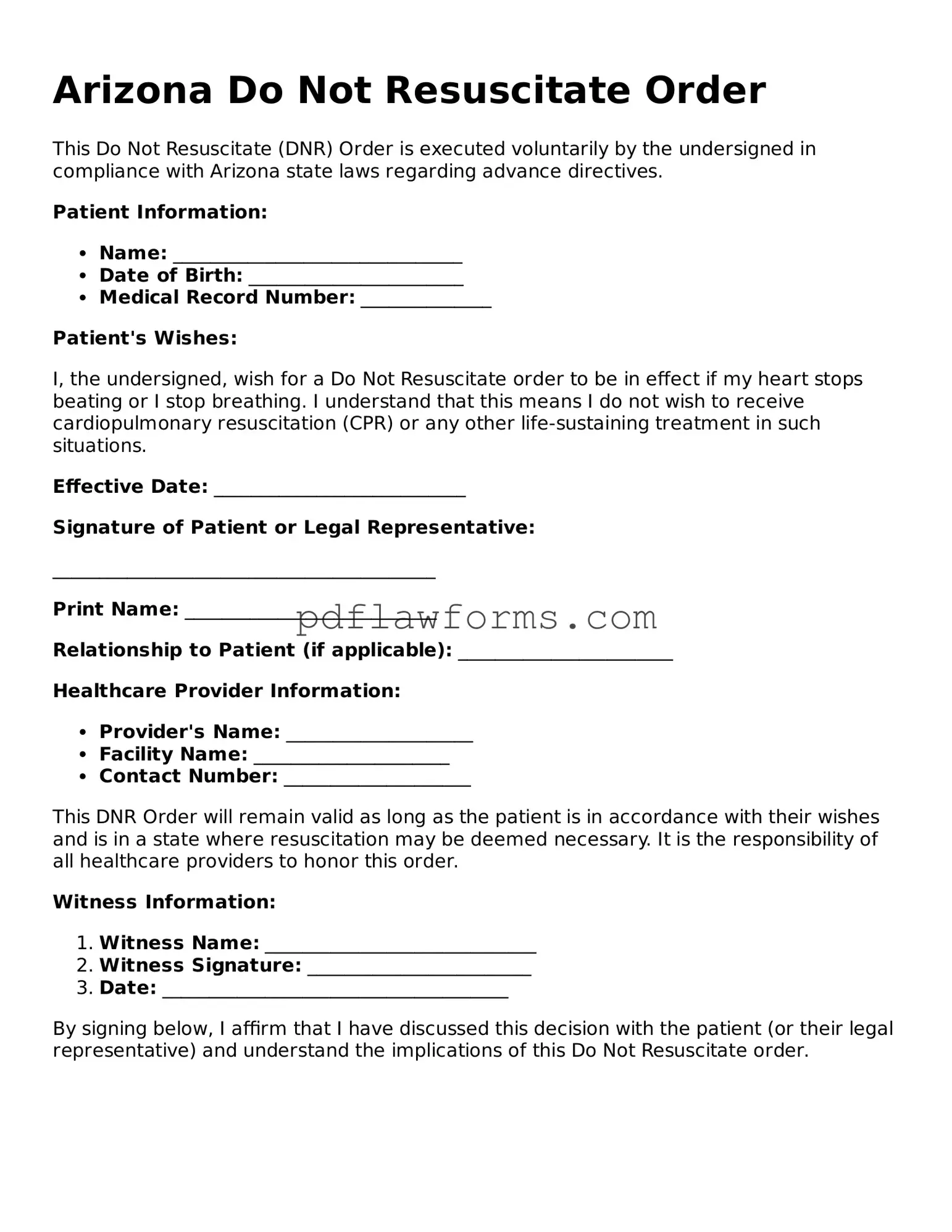Filling out the Arizona Do Not Resuscitate (DNR) Order form can be a crucial step in ensuring that a person's healthcare preferences are honored. However, many individuals make mistakes during this process that can lead to confusion or unwanted medical interventions. Understanding these common errors can help ensure that the form is completed correctly.
One significant mistake is failing to include the patient's full legal name. The DNR form must clearly identify the individual to avoid any ambiguity. If the name is incomplete or incorrect, healthcare providers may not recognize the order, potentially leading to resuscitation efforts that the patient did not want.
Another common error involves not signing the form. The DNR Order must be signed by the patient or their legal representative. Without a signature, the document lacks legal validity. It's essential to ensure that the signature is clear and matches the name provided on the form.
Additionally, individuals often overlook the requirement for a witness signature. In Arizona, the DNR form must be witnessed by either a licensed healthcare professional or another adult. If this step is skipped, the form may not be honored by medical personnel, undermining the patient’s wishes.
People sometimes make the mistake of not discussing their DNR wishes with family members or healthcare providers. Open communication is vital. If family members are unaware of the DNR order, they may be confused or distressed when medical personnel attempt to resuscitate the patient, despite their documented wishes.
Another frequent oversight is neglecting to update the DNR form when circumstances change. If a patient's health status or preferences evolve, the DNR Order should be revised accordingly. Failing to do so can lead to situations where the patient's current wishes are not reflected in the document.
Lastly, individuals may not keep copies of the completed DNR form in accessible locations. It is crucial to provide copies to healthcare providers, family members, and the patient’s primary care physician. Without easy access to the document, there is a risk that the DNR order will not be recognized in an emergency.
By being aware of these common mistakes, individuals can take the necessary steps to ensure that their DNR Order is completed accurately and effectively communicates their healthcare preferences.
